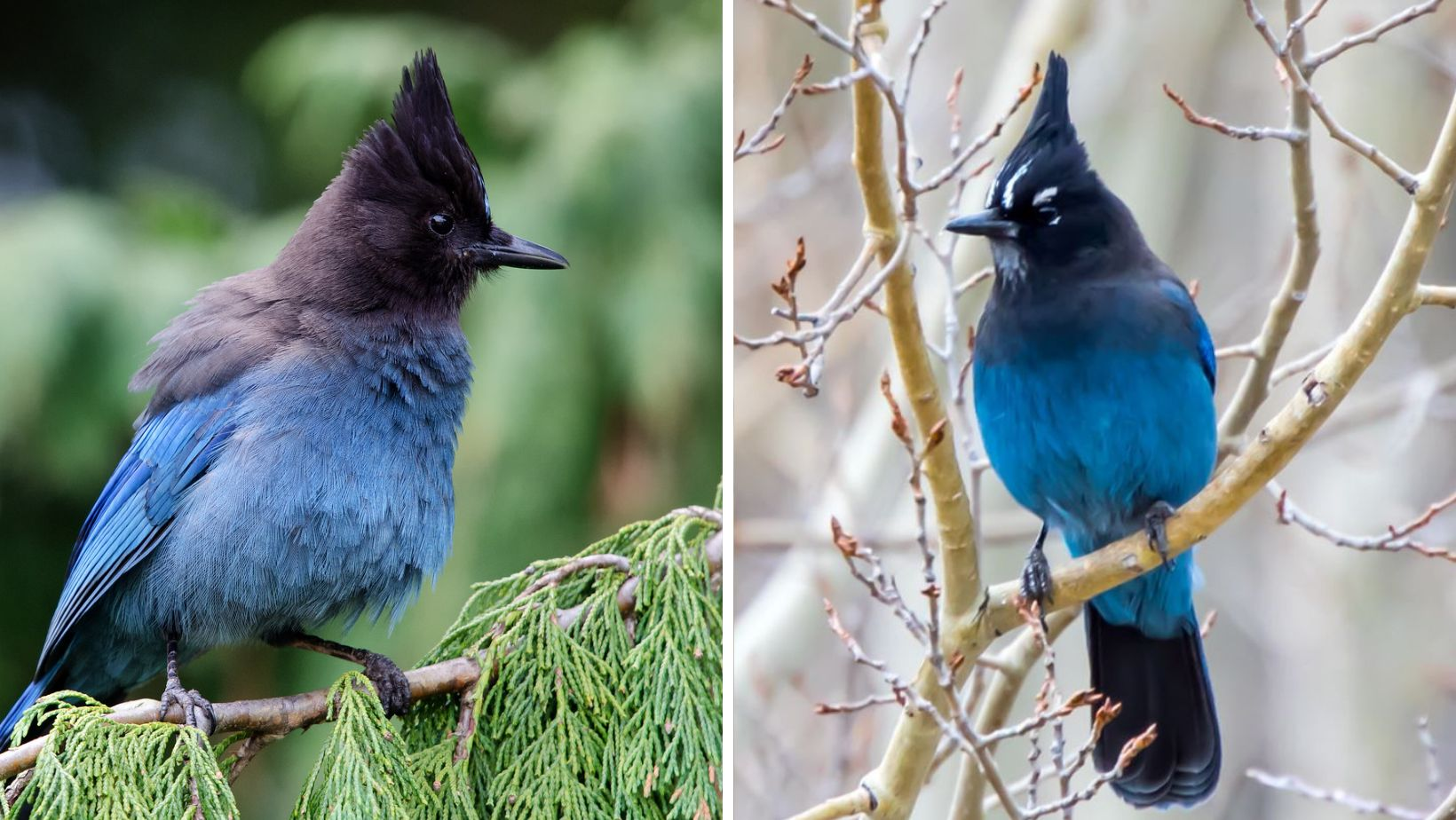Descubre la deslumbrante belleza del Steller’s jay, donde su cresta triangular y su patrón negro y azul se entrelazan en armonía. Su presencia magnética te dejará sin aliento. Adéntrate en su fascinante mundo y maravíllate con su elegancia y encanto. Prepárate para ser cautivado por la exquisita combinación de colores de esta majestuosa ave.¡No te pierdas la oportunidad de conocer al Steller’s jay y enamórate de su belleza celestial!
Un ave que luce una impresionante cresta triangular, mitad negra y mitad azul, rematada con una definitiva demarcación negra y azul.

Conoce a Stellers Jay
El arrendajo de Steller (Cyanocitta stelleri) es un arrendajo emparentado con el arrendajo azul más conocido. Desde la distancia parecen bastante oscuros, sin las partes inferiores blancas de otras especies de arrendajos. la cabeza es de color negro oscuro, bajando casi hasta la espalda, mientras que el resto del cuerpo es azul. Aparecen marcas blancas sobre ambos ojos, pero es muy fácil pasarlas por alto. Un pájaro cantor grande que tiene alas redondeadas y una cola larga y completa. el pico es largo, recto y poderoso, mientras que en la parte superior de la cabeza se asienta una prominente cresta triangular que se yergue casi hacia arriba.
The Steller’s Jay is native to western North America. It is also known as the long-crested jay, mountain jay, and pine jay.
They are common in North Idaho, but they occur throughout the higher-elevation coniferous forests coating the western half of the Americas, from Alaska to Nicaragua.
Stellers Jay primarily prefers to live in coniferous forests, it can be found in other types of forests as well. They can be found from low to moderate elevations, and on rare occasions to as high as the tree line. Steller’s jays are common in residential and agricultural areas with nearby forests.
Being an omnivores bird, Steller’s jay eats about two-thirds plant matter and one-third animal matter. They find their food both from the ground and in trees. They eat a wide range of seeds, nuts, berries, and other fruit. They also eat invertebrates, rodents, eggs, and nestlings. There have also been some accounts of them eating small reptiles, such as small snakes and lizards.
Steller’s jays remain in monogamous pairs, incubating a clutch of eggs by the female for about 16 days. During this time the male feeds the female. The nest is usually found in a conifer, but can also sometimes be found in the hollow of a tree or awning of a house. It is built using scavenged material, both natural, and from trash, sometimes mixed with mud. Between two to six eggs are laid within during a breeding season, oval in shape they have a somewhat glossy surface, a greenish-blue with brown to olive speckles.
Steller’s Jay Nest y huevos
Los adultos probablemente se aparean de por vida. se involucran en la alimentación de cortejo y se exhiben arrojando sus crestas y plumas azules vibrantes. Una pareja recolecta agujas de pino, ramitas, hierbas y barro durante la temporada de reproducción. luego construyen un nido en forma de copa donde la hembra pone e incuba hasta seis huevos de color verde azulado con manchas de color marrón oscuro.
Ampliamente distribuido en toda su área de distribución, el arrendajo de Steller a veces pasa el rato con otras especies de arrendajos como el arrendajo de California Scrub arriba. El arrendajo de Steller se considera de riesgo mínimo en la lista roja de la UICN.
YOU CAN WATCH AND LISTEN TO THIS BIRD RIGHT HERE IN THE VIDEO BELOW: